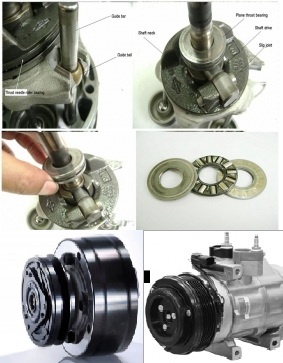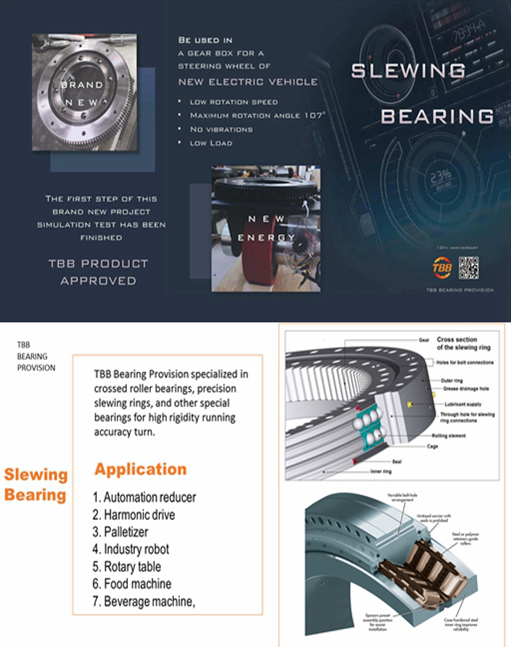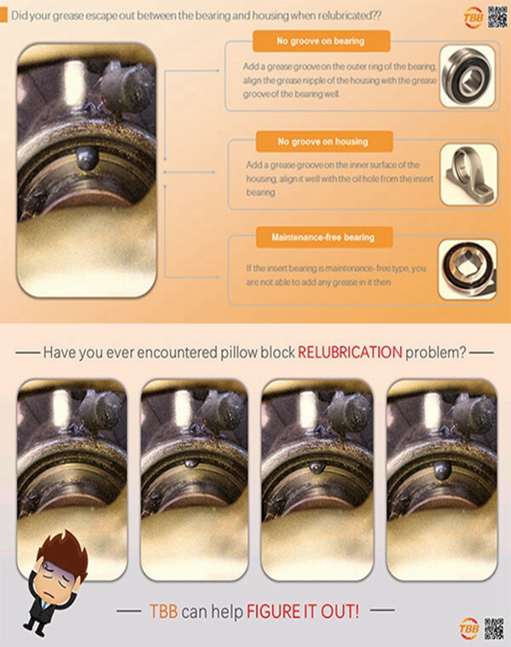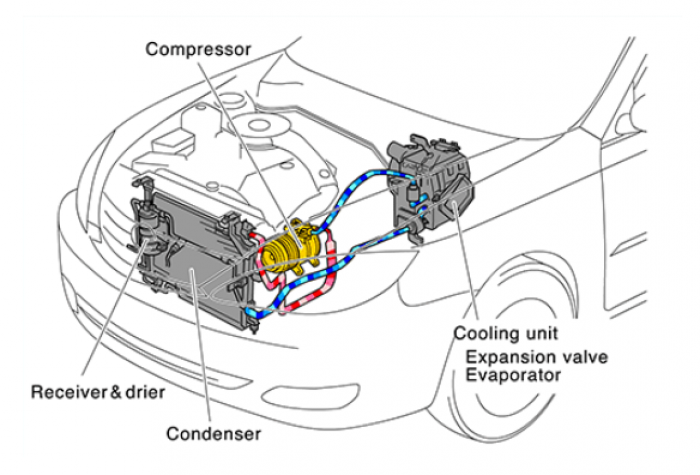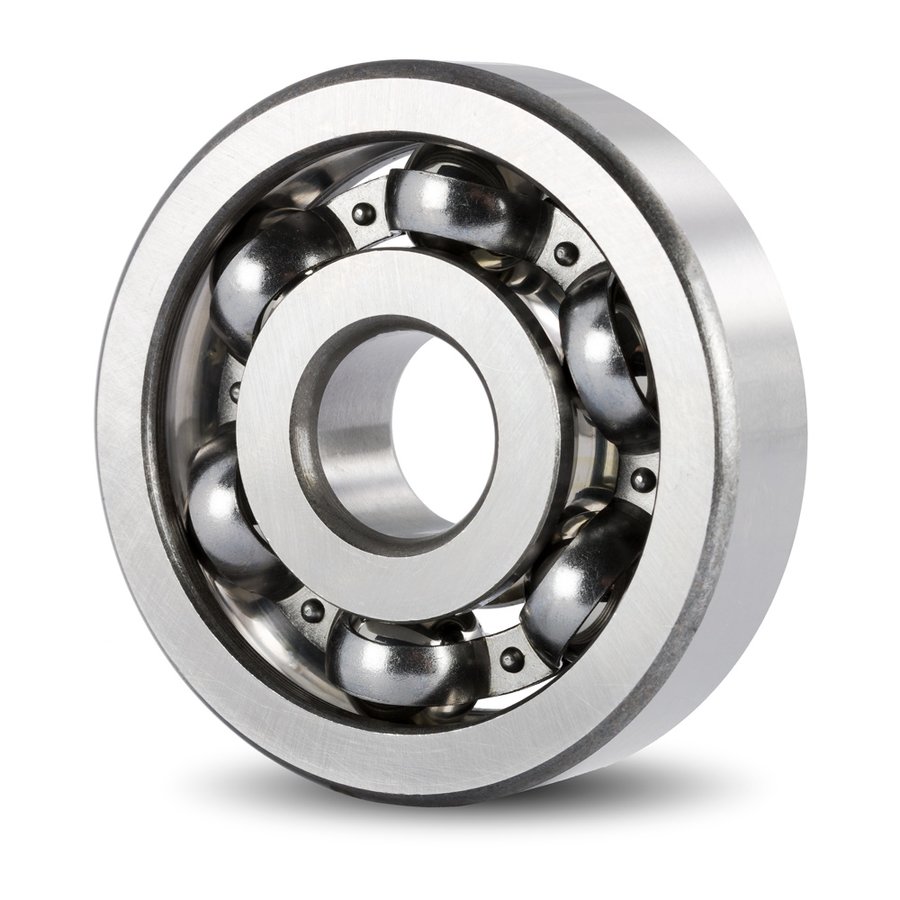How much do you know about Air-Condition Compressor? We summarized here with several typical types of air-conditioning compressors and TBB bearing usages. 1, V5 COMPRESSOR Improved air conditioning performance and fuel economy because of its smooth, continuous operation without clutch cycling. Meets vehicle air conditioning demand with its adjustable displacement capability. Compatible with R-12 & R-134a Systems. 2, HS COMPRESSOR HS Compressor which has been Hanon Systems’ first development compressor is fixed swash plate type. It maintains the constant compression ratio and discharge rate of refrigerant. Also, HS Compressor is able to adjust the cooling load through the on/off function of Clutch which is compressor’s component. It’s been one of the Hanon Systems’ competitive products as a low-cost product. 3, R4 COMPRESSOR The R4 compressor has just under 10 cubic inches of displacement per revolution, with four cylinders radiating from its crankshaft. It has basically the same characteristics as the A-6 compressor, except it seems to fit in smaller spaces and is much lighter due to its mostly aluminum construction. The R-4 is larger in capacity than we like in an average classic car installation.
Bearing in ABEC-7(P4) or ABEC-1(P0) for my application? ●What does Bearing Precision mean? When dealing with rolling bearings, precision is described by tolerance classes which include dimensional accuracy and running accuracy.it is regulated by ISO or other related standards. Dimensional Accuracy includes (the items related to the installation of shaft and outer shell): 1. Allowable deviation (acceptable values) for bore diameter, outer diameter, width and assembled bearing width 2. Bore diameter uniformity as seen in chamfer dimensions 3. Allowable inner ring tapered bore deviation and shape error 4. Average bore diameter variation 5. Outer diameter variation 6. Average outer diameter unevenness 7. Raceway width and height variation (for thrust bearings) Running Accuracy includes (items related to the runout of the rotator): Acceptable values for inner and outer ring radial runout and axial runout Acceptable values for inner ring side runout, and outer ring outer diameter runout Permissible variation of raceway thickness of thrust bearing Permissible deviation and variation of tapered hole Permissible variation of inclination of the outer ring surface Here I attached the comparison table from different countries: The applicable accuracy levels are different according to different types of bearings. The following table shows different types of bearings and their…
● Functions of a lubricant If rolling bearings are to operate reliably they must be adequately lubricated to prevent metal-to-metal contact between the rolling elements, raceways and cages. Separation of the surfaces in the bearing is the primary function of the lubricant, which must also inhibit wear and protect the bearing surfaces against corrosion. In some applications the lubricant is also used to carry away heat. The choice of a suitable lubricant and method of lubrication for each individual bearing application is therefore important, as is correct maintenance. Lubricants for rolling bearings serve the following functions: * Separate the rolling contact surfaces in the bearing; * Separate the sliding contact surfaces in the bearing; * Protect highly finished bearing surfaces from corrosion; * Provide sealing against contaminants (in the case of grease); * Provide a heat transfer medium (in the case of oil). ● Re-lubrication of pillow block The purpose of any bearing, housed or not, is to reduce the amount of friction between connected or interacting components. The right bearings also reduce the amount of wear-and-tear on the equipment. This, in turn, increases the longevity and operational capabilities of the machinery which requires some form of lubrication. A single…
Basic Introduction Pillow block consists of Plummer Block (Bearing Housing) & Insert Bearing(Y-Bearing).It provides supports for a rotating shaft with the help of compatible bearings & other accessories. The units are available in a variety of pillow block, flange, cartridge and take-up mounted configurations with one piece cast iron, ductile iron, stainless steel, thermoplastic or two pressed steel housings. There are many different combinations of insert bearings and housings. Material of bearing units A, Material of bearings: The materials of the race and ball of bearing require enough hardness and the following qualities:(1). Large fatigue strength against repeated stress due to fatigue fracture of the race surface which governs the life of the bearings.(2). High limit of elasticity and high yield strength to prevent deformation when a large load is applied per unit area.(3). Large abrasion resistance against sliding friction between the retainer and the ball.(4). High strength against crack due to impact load and failure caused by improper fitting etc.(5).Small secular change in dimension and shape due to change of structure or internal stress. GCr15 Steel (High carbon chromium bearing steel) satisfies the above comparatively well, and its chemical composition is shown in the following table. Chemical composition of…
Much like a heart in a human body, the compressor circulates the system’s lifeblood, in this case the refrigerant, that is vital to the proper operation of the air conditioning (A/C) system.The world-leaders of car air-conditioning compressors, such as Toyota Motor Corporation, Daimler AG, General Motors Company (GM), Volkswagen AG and Hyundai Motor Company. Car Air-Conditioning Mechanisms Liquid (refrigerant) is cycled throughout a sealed air conditioning system in a repeated process of vaporization (evaporation), liquefaction, and re-vaporization. It is necessary for a gas to give off heat to liquefy (condense). If the refrigerant gas is pressurized, and the pressure is increased, it becomes comparatively easier to liquefy. TYPES OF COMPRESSOR 1, Swash Plate Type (Fixed Displacement) This piston is constructed from the components shown in the illustration.The pistons move back and forth when power from the engine causes the shaft and swash plate to rotate. One piston is comprised of cylinders on both sides. The ends of the piston intake pressurize and discharge refrigerant. 2, Vane Type (Fixed Displacement) This compressor is constructed from cylinders and five vanes built into the rotors, as well as two discharge valves and front and back side plates.The five vanes rotate in tandem with the rotors…
Rolling element bearings are available in a variety of types, configurations, and sizes. When selecting the correct bearing for your application, it is important to take these factors below into consideration. 1. Operating conditions and operating environment1) Function and construction of components to house bearings2) Bearing mounting location3) Bearing load (direction and magnitude)4) Rotational speed5) Vibration and shock load6) Bearing temperature (Ambient temperature/temperature rise)7) Operating environment (potential for corrosion, degree of contamination, extent of lubrication) 2. Bearing type and configuration1) Dimensional limitations2) Bearing load (magnitude, direction, vibration, presence of shock load)3) Rotational speed4) Bearing tolerances5) Rigidity6) Allowable misalignment of inner/outer rings7) Friction torque8) Bearing arrangement (fixed side, floating side)9) Installation and disassembly requirements10) Bearing availability and cost 3. Bearing dimensions1) Design life of components to house bearings2) Dynamic/static equivalent load conditions3) Safety factor4) Allowable speed5) Allowable axial load6) Allowable space 4. Bearing tolerances1) Shaft run-out tolerances2) Rotational speed3) Torque fluctuation 5. Bearing’s internal clearance1) Material and shape of shaft and housing2) Fit3) Temperature differential between inner/outer rings4) Allowable misalignment of inner/outer rings5) Load (magnitude, nature)6) Amount of preload7) Rotational speed 6. Cage type and material1) Rotational speed2) Noise level3) Vibration and shock load4) Momentary load5) Lubrication type and method 7. Lubricant, lubrication method, sealing method1) Operating temperature2) Rotational speed3) Lubrication…
